As we all know Respiration is counted as one of the most important topics in class 10th Biology. Respiratory organs are essential for breathing and gas exchange in the human body. The primary organs involved in the process are the lungs. Within the lungs, bronchi and bronchioles form a branching network that delivers air to the tiny sacs called alveoli. Here, oxygen from inhaled air diffuses into the bloodstream, while carbon dioxide, a waste product, moves from the blood to be exhaled. This intricate system ensures the body receives oxygen and eliminates carbon dioxide, vital for sustaining life. Here we have discussed some more points related to the lungs, their structure, and their functions below in the article.
Lungs
Lungs are vital organs in the human respiratory system, responsible for the exchange of oxygen and carbon dioxide, crucial for sustaining life. Located in the chest cavity, these spongy, air-filled structures are protected by the ribcage. When you breathe in, the lungs expand, allowing tiny air sacs called alveoli to absorb oxygen from the inhaled air into the bloodstream. Simultaneously, carbon dioxide, a waste product from the body’s cells, is exchanged from the blood into the alveoli and expelled when you breathe out.
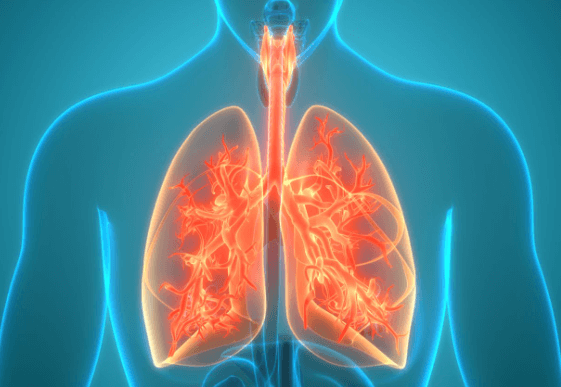
This process, known as respiration, is essential for providing oxygen to body tissues, enabling cellular functions, and removing harmful carbon dioxide. The intricate network of bronchial tubes and blood vessels within the lungs ensures efficient gas exchange, supporting the body’s oxygen supply and maintaining a balanced internal environment. Proper lung function is vital for overall health, emphasizing the significance of maintaining respiratory well-being.
Diagram of Structure of Lung
A diagram of the lung typically illustrates the structure and functioning of the respiratory system. It shows the lungs, bronchi, bronchioles, and alveoli. The lungs are two spongy organs responsible for breathing. Bronchi are the main airways leading into the lungs, branching into smaller tubes called bronchioles. Alveoli are tiny air sacs within the lungs where gas exchange occurs. Such a diagram visually explains how oxygen is taken in during inhalation and how carbon dioxide is expelled during exhalation, which is crucial for sustaining life.
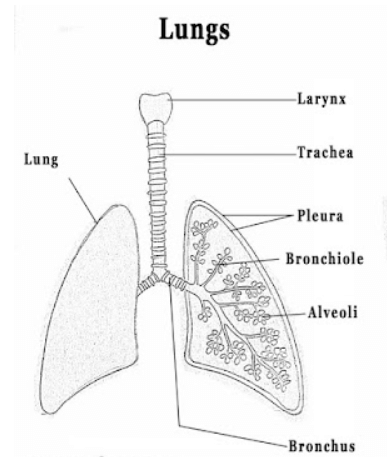
Structure of Lungs
The lungs are paired, spongy organs located in the chest. Each lung is enclosed within a pleural cavity and surrounded by a pleural membrane. The main structures of the lungs include bronchi, bronchioles, and alveoli. Bronchioles, in turn, lead to tiny air sacs called alveoli. These alveoli are the primary sites of gas exchange, where oxygen is absorbed into the bloodstream, and carbon dioxide is released for exhalation. The lungs are protected by the ribcage and the diaphragm, a dome-shaped muscle beneath the lungs that aids in breathing.
| Different Structures of Lungs | |
| Structures | Functions |
| Bronchi | Bronchi are the main airways that carry air into the lungs. |
| Bronchioles | Bronchiole are smaller branches of bronchi, distributing air within the lungs. |
| Alveoli | Alveoli are tiny air sacs where gas exchange (oxygen and carbon dioxide) takes place. |
| Pleura | The pleura is a double membrane surrounding the lungs, reducing friction during breathing. |
| Diaphragm | The diaphragm is a dome-shaped muscle below the lungs, aiding in the process of breathing. |
| Capillaries | Capillaries are tiny blood vessels surrounding alveoli, facilitating the exchange of gases with the bloodstream. |
1. Bronchi and Bronchioles
- The trachea also known as windpipe branches into two main bronchi, one entering each lung.
- Bronchi are the main air passages in the lungs. They branch from the trachea, carrying air to and from the lungs’ smaller airways, enabling the exchange of oxygen and carbon dioxide.
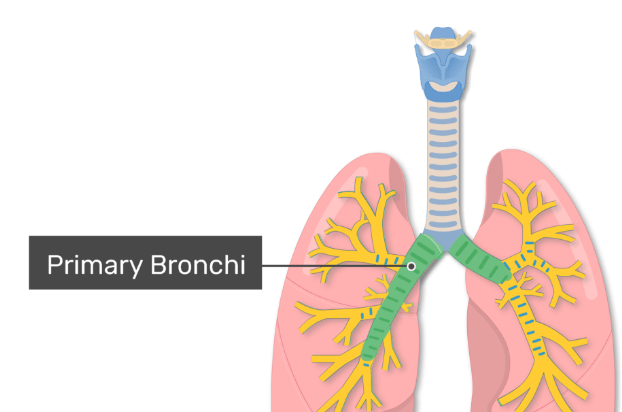
- These bronchi are further divided into smaller tubes called Bronchioles, which continue to branch out into the lungs.
- Bronchioles are tiny air passages in the lungs, branching from the bronchi. They carry air to alveoli, where oxygen and carbon dioxide exchange occurs, facilitating efficient breathing and oxygenation.
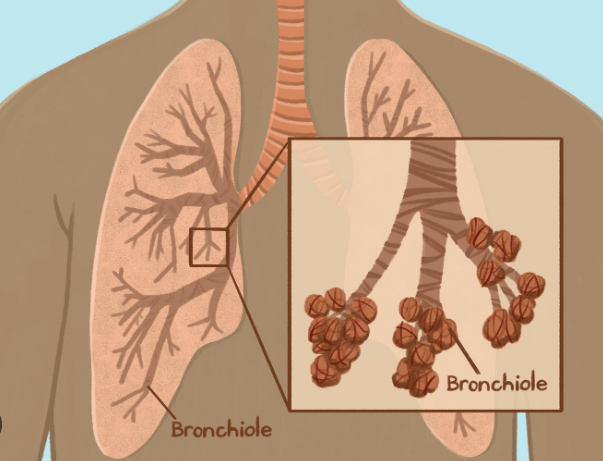
2. Alveoli
- The bronchioles end in tiny air sacs called alveoli.
- The Alveoli are the site of gas exchange. Oxygen from the inhaled air passes through the thin walls of the alveoli and into the bloodstream, while carbon dioxide (a waste product) moves from the blood into the alveoli to be exhaled.
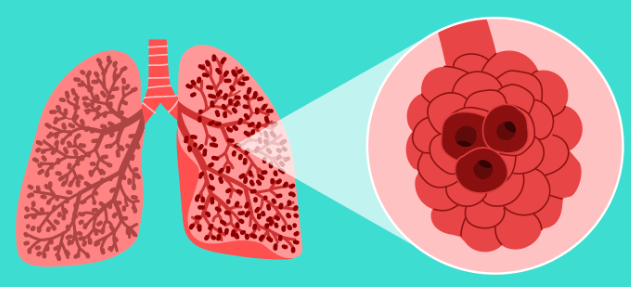
3. Pleura
- The lungs are enclosed in a double-layered membrane which is known as pleura.
- The visceral pleura covers the surface of the lungs, and the parietal pleura lines the chest cavity. Between them is a fluid-filled pleural cavity, which reduces friction during breathing.
4. Diaphragm
- The diaphragm is a large, dome-shaped muscle that is present below the lungs.
- During inhalation, the diaphragm contracts and moves downward, expanding the chest cavity and allowing air to be drawn into the lungs. During exhalation, the diaphragm relaxes, and air is pushed out of the lungs.
5. Capillaries
- The blood vessels also known as capillaries surround the alveoli.
- Oxygen and carbon dioxide diffuse across the thin capillary walls, allowing oxygen to enter the bloodstream.
Functions of Lungs
The lungs perform several vital functions in the human body, primarily related to respiration and gas exchange. These functions are essential for the body’s overall oxygen supply, carbon dioxide removal, and maintaining the internal balance necessary for proper cellular functions.
- Gas Exchange: The lungs facilitate the exchange of oxygen (inhaled from the air) and carbon dioxide (a waste product of metabolism) between the air and the bloodstream, where it binds to red blood cells and is transported to body tissues. Carbon dioxide is produced by the lungs in the bloodstream and then exhaled from the body.
- Oxygenation: Lungs oxygenate the blood, ensuring that the body’s cells receive an adequate supply of oxygen for cellular respiration. Oxygen is essential for the production of energy in cells.
- Removal of Carbon Dioxide: Lungs help remove the bloodstream. Carbon dioxide is a waste product produced by cells during metabolism. It is transported to the lungs, where it is expelled from the body during exhalation.
- pH Regulation: Lungs play a crucial role in regulating the body’s pH level by controlling the concentration of carbon dioxide in the blood. Proper pH balance is essential for various biochemical reactions in the body.
- Filtering and Humidity Air: As air passes through the respiratory tract, the lungs filter out small particles and microbes. They also humidity the inhaled air, ensuring that the delicate lung tissues are not irritated by dry air.
- Immune Defense: Lungs have a mucous lining and tiny hair-like structures called cilia that help trap and remove particles and microbes, providing a basic defense mechanism against respiratory infections.
- Breathing Control: Lungs contribute to the regulation of breathing rate and depth. Sensors in the lungs and blood vessels detect changes in oxygen and carbon dioxide levels, sending signals to the brain, which adjusts the rate and depth of breathing to maintain proper gas exchange.

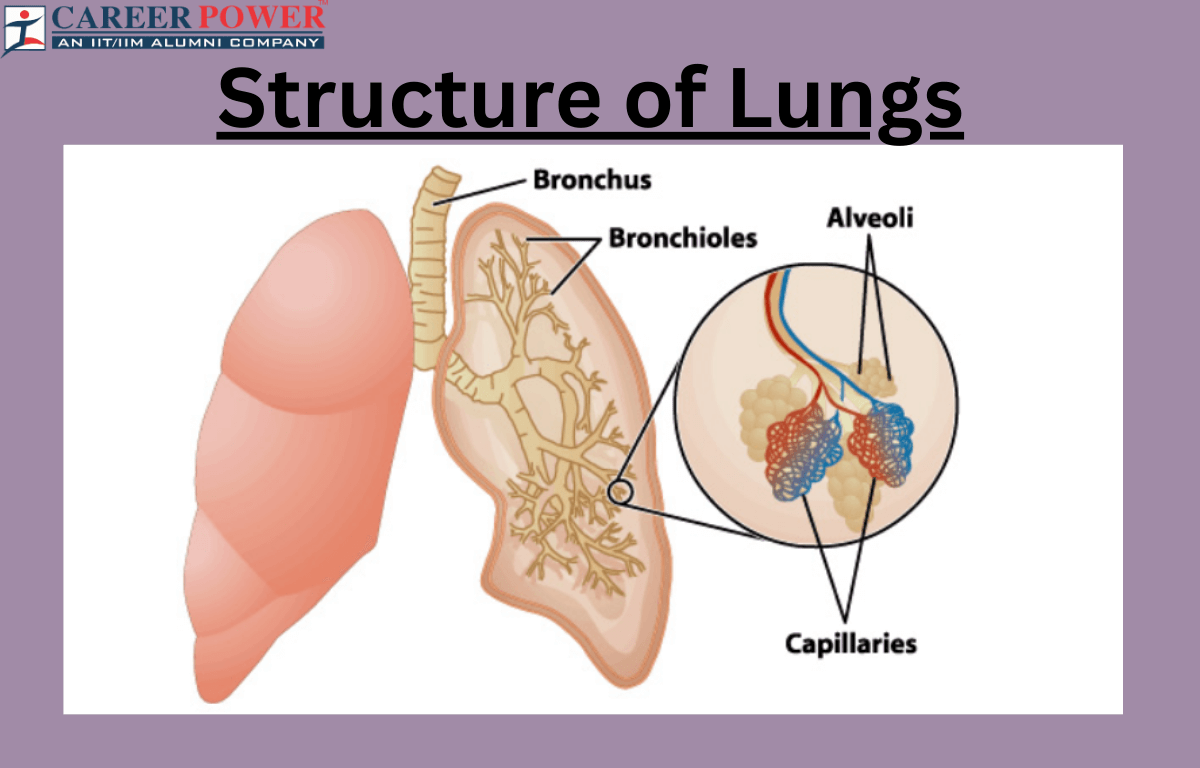
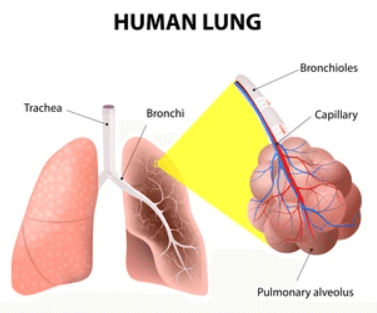

 50 Vegetables Name for Kids in English a...
50 Vegetables Name for Kids in English a...
 Food Chain: Definition, Types, Examples,...
Food Chain: Definition, Types, Examples,...
 Human Respiratory System: Definition, Di...
Human Respiratory System: Definition, Di...













